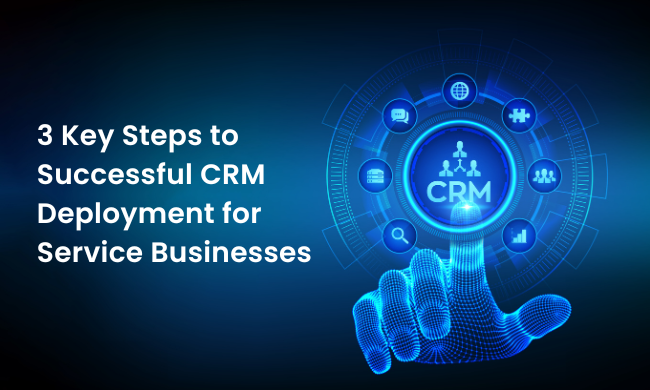
Are you a service-based business owner looking to enhance customer relationships, optimize your sales processes, and grow your practice? Implementing a CRM system can be a transformative step. In this article, we’ll explore three crucial steps to successfully deploy a CRM for your service business, with real-life examples and specific sales process steps tailored to your industry.
Step 1: Building an Effective Sales Workflow
Your first step in CRM deployment is to create a well-defined sales workflow tailored to your specific service business. A sales workflow is a series of stages and activities that a lead or prospect goes through from the initial inquiry to becoming a client. Let’s look at examples of service businesses and their sales workflows:
Example 1: Smith & Associates Law Firm (Legal Services)
1. Initial Consultation Request: A potential client contacts the law firm to request an initial consultation regarding their legal needs.
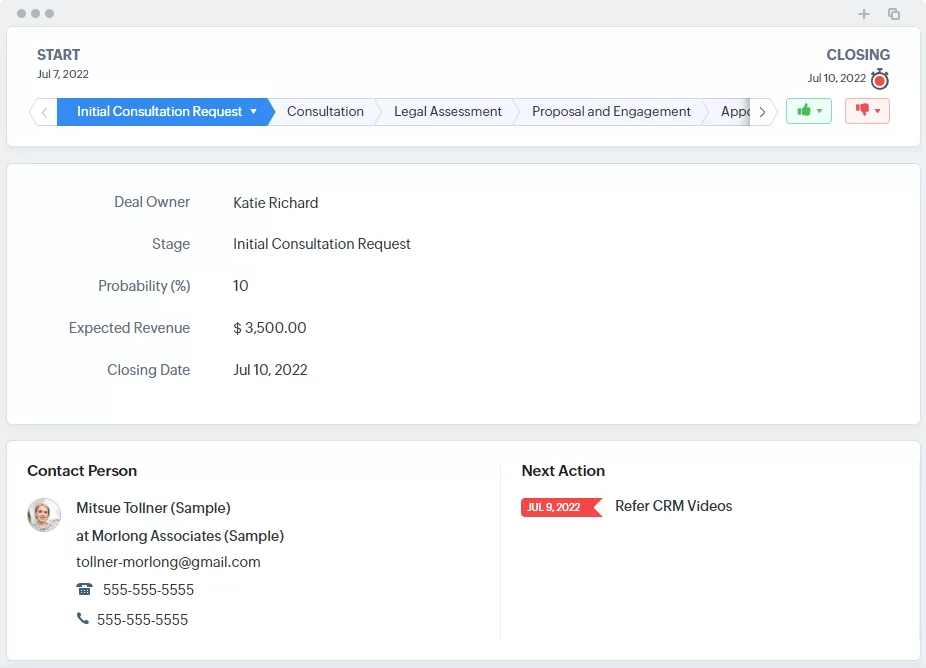
2. Consultation: The law firm schedules a meeting to assess the client’s legal situation.
3. Legal Assessment: During the consultation, the legal team conducts a thorough assessment and provides recommendations.
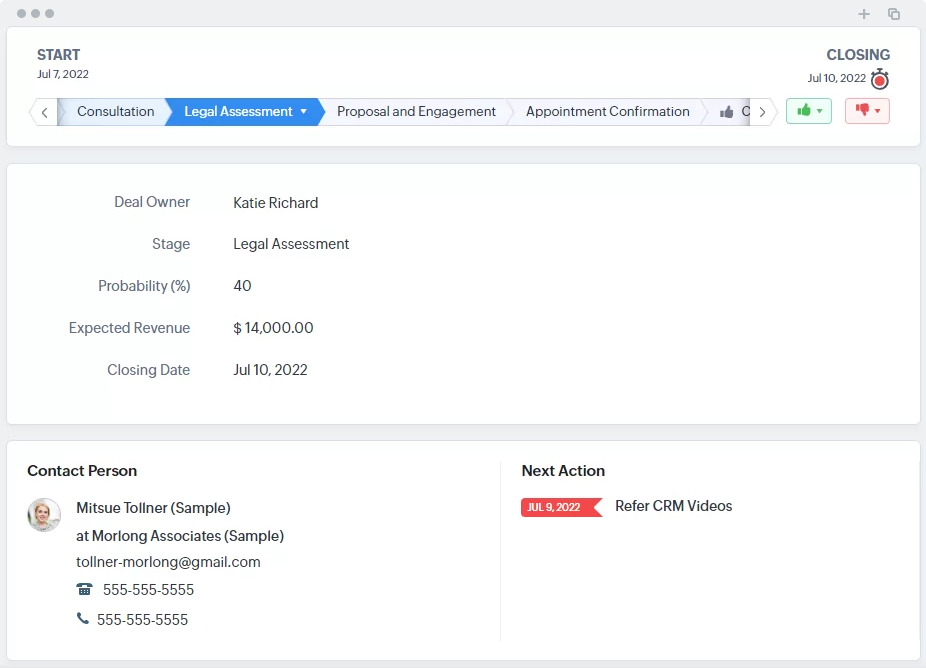
4. Proposal and Engagement: The law firm sends a proposal detailing the scope of legal services and the engagement agreement.
5. Client Onboarding: Once the client accepts the proposal, they go through the onboarding process, including signing legal documents and making an initial payment.
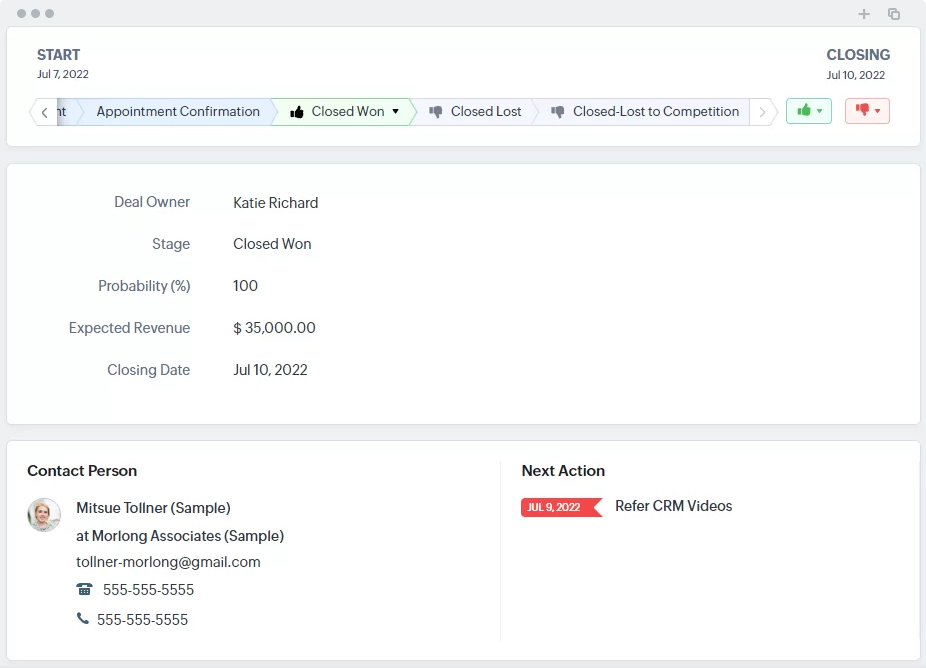
Example 2: Healthy Smiles Dental Clinic (Dental Services)
1. Appointment Request: A potential patient contacts the dental clinic to schedule an appointment.
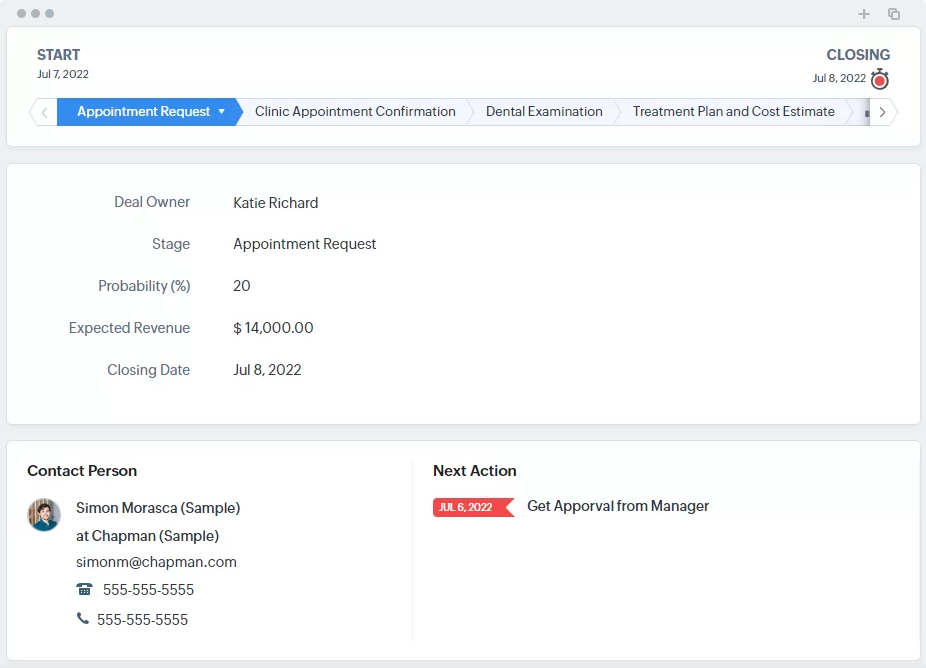
2. Clinic Appointment Confirmation: The clinic confirms the appointment and sends pre-appointment instructions.
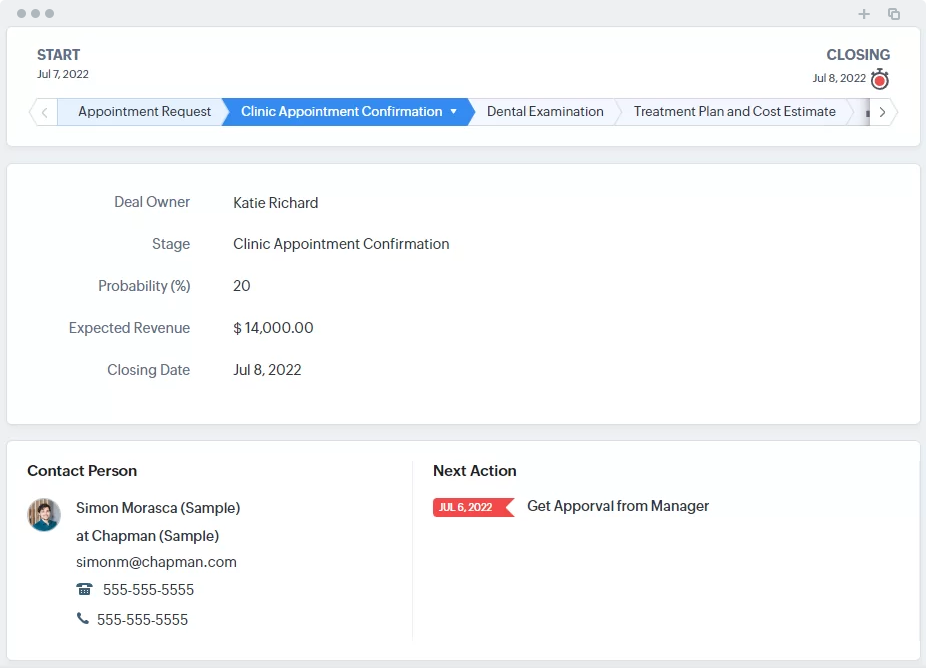
3. Dental Examination: The patient arrives for the appointment, undergoes an examination, and receives treatment recommendations.
4. Treatment Plan and Cost Estimate: The clinic provides a detailed treatment plan and cost estimate.
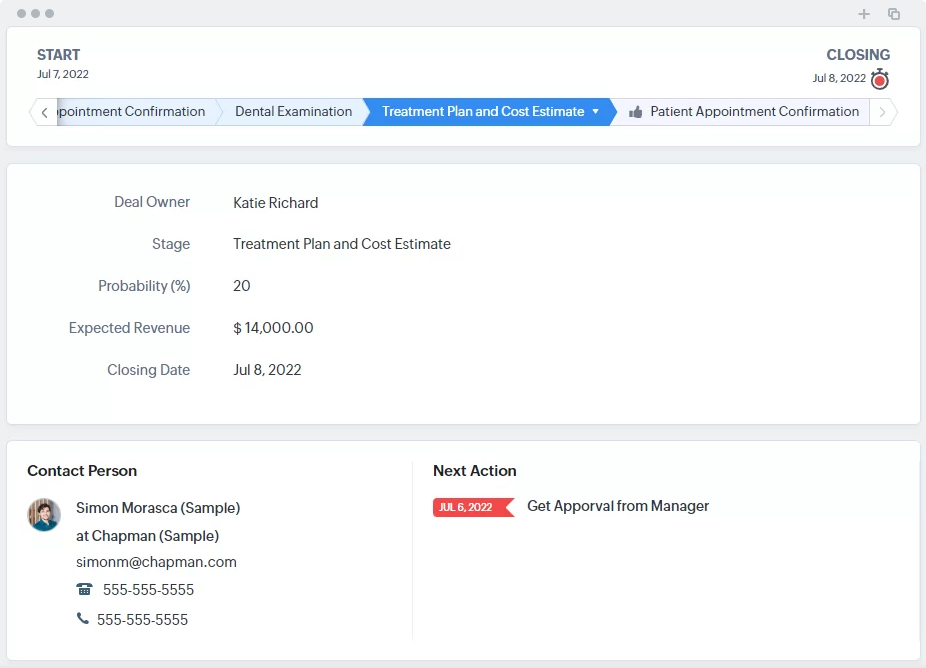
5. Patient Appointment Confirmation: The patient schedules their treatment and confirms the appointment.
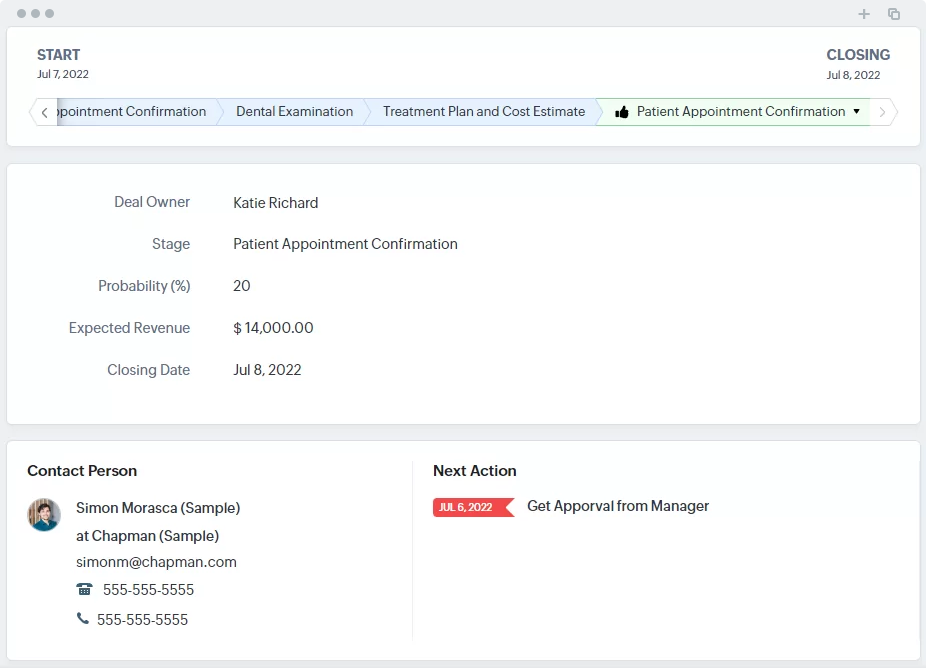
Example 3: GreenScapes Landscaping Services (Landscaping Services)
1. Site Visit Request: A potential client contacts the landscaping service for a site visit to discuss landscaping needs.
2. Site Consultation: The company’s landscaping experts visit the client’s property, assess the landscape, and discuss design options.
3. Proposal and Contract: After the site visit, GreenScapes provides a landscaping proposal and contract.
4. Project Confirmation: The client approves the proposal and signs the contract.
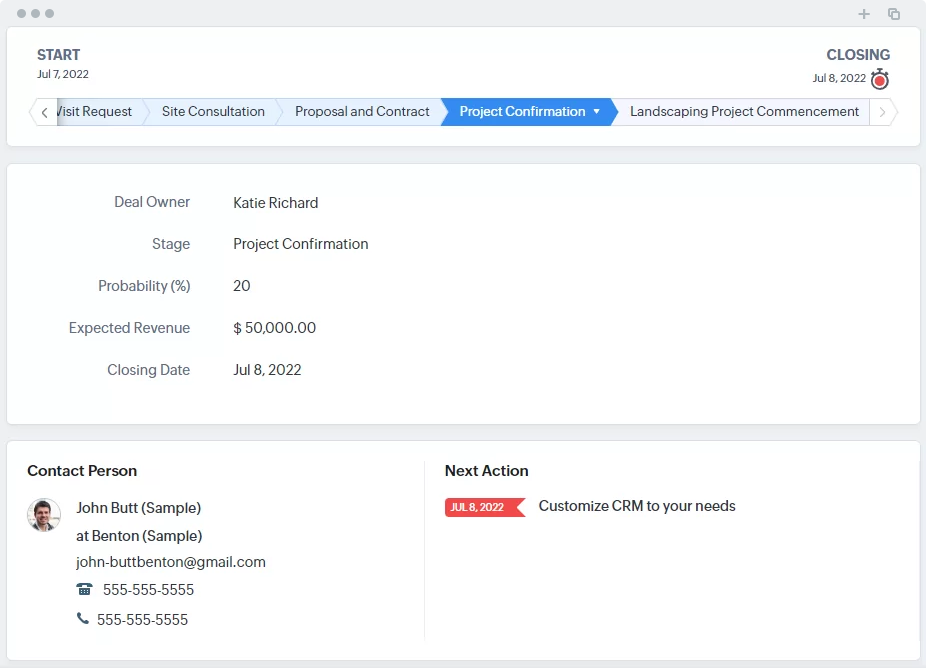
5. Landscaping Project Commencement: GreenScapes begins the landscaping project according to the agreed schedule.
By creating these structured workflows, service businesses can better manage and track their leads, improving client relationships and ensuring that potential clients receive a seamless experience.
Step 2: Integration of Automation
The second crucial step in CRM deployment is integrating automation. This involves automating various aspects of your service-based business to enhance efficiency and client engagement. Let’s explore how automation benefits service businesses in the legal, dental, and landscaping industries:
Example 1: Smith & Associates Law Firm (Legal Services)
1. Automated Document Management: Legal documents, such as contracts, can be automatically generated and stored within the CRM system, ensuring easy access and compliance.
2. Client Communication: Automated email communication can be set up for sending updates on case progress, court dates, and important legal information.
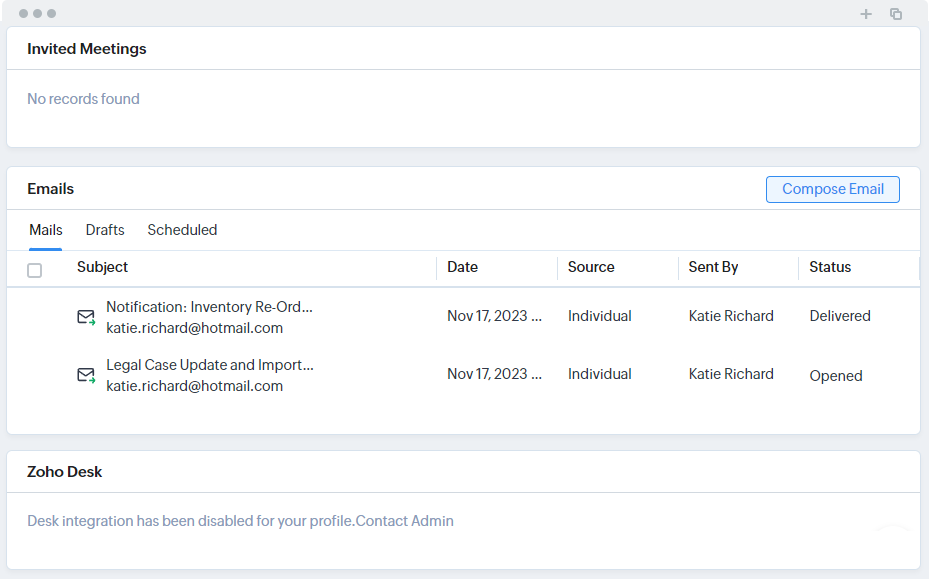
3. Appointment Scheduling: Clients can use an online portal linked to the CRM to schedule consultations, making the process more convenient for them and reducing administrative work.
Example 2: Healthy Smiles Dental Clinic (Dental Services)
1. Appointment Reminders: Automated reminders via email or SMS can be scheduled to reduce no-shows and ensure appointments run smoothly.

2. Treatment Plan Communication: The CRM can send automated treatment plan details and cost estimates to patients, allowing them to review and make informed decisions.
3. Patient Follow-up: After a dental procedure, automated follow-up messages can be sent to check on patients’ recovery and gather feedback.
Example 3: GreenScapes Landscaping Services (Landscaping Services)
1. Quote Generation: The CRM system can automate the generation of landscaping project quotes based on client needs and preferences.
2. Project Status Updates: Clients can receive automated project status updates, keeping them informed about the progress of their landscaping project.
3. Inventory Management: Automated alerts can be set up to notify staff when inventory levels of landscaping materials are running low, ensuring timely restocking.
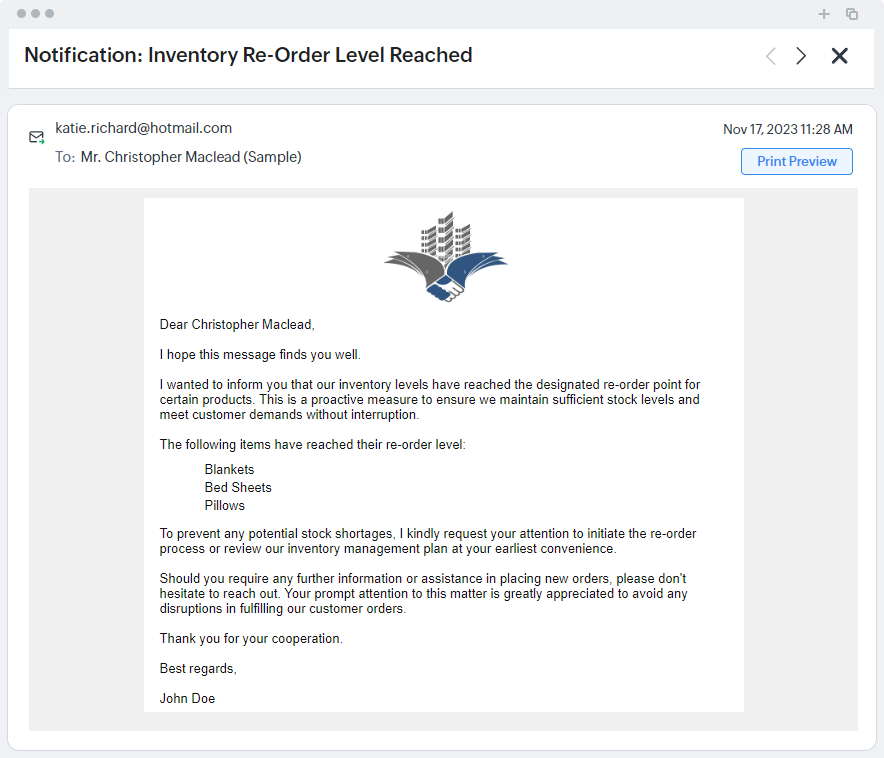
By integrating automation into your CRM system, service businesses can improve client satisfaction, reduce administrative overhead, and allocate resources more effectively.
Step 3: Quarterly Data Reviews
Regularly reviewing the data collected in your CRM is crucial for making informed decisions, adapting your marketing strategies, and optimizing your service offerings. These quarterly data reviews help you refine your approach and allocate your budget effectively. Let’s explore how data reviews can benefit service businesses in the legal, dental, and landscaping industries:
Example 1: Smith & Associates Law Firm (Legal Services)
1. Case Outcome Analysis: The law firm can analyze the data to identify which types of cases have the highest success rates and allocate resources accordingly. For instance, if personal injury cases consistently yield positive outcomes, the firm can invest more in this practice area.
2. Client Retention: By examining the data, the law firm can identify trends in client retention and implement strategies to enhance it. For example, if the data shows that clients who receive regular case updates are more likely to stay, the firm can prioritize improved communication practices.
3. Marketing Effectiveness: Regular data reviews help the firm assess the performance of different marketing channels and campaigns. If online advertising consistently brings in more clients than print advertisements, the firm can optimize its marketing budget accordingly.
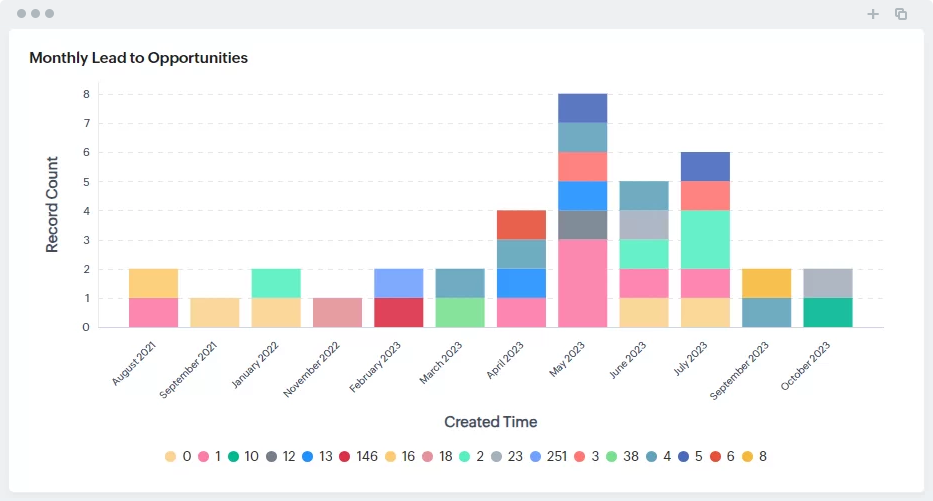
Example 2: Healthy Smiles Dental Clinic (Dental Services)
1. Treatment Success Rate: The dental clinic can analyze data to determine which dental treatments have the highest success rates and refine its service offerings. For example, if teeth whitening procedures show consistent high patient satisfaction and success, the clinic can promote this service more aggressively.
2. Patient Feedback: Regularly reviewing patient feedback helps the clinic continuously improve service quality and patient satisfaction. If feedback indicates that patients appreciate a particular hygienist’s friendly demeanor, the clinic can encourage these qualities in all staff.
3. Cost Management: By reviewing financial data, the clinic can better manage costs and allocate resources efficiently. If the data reveals that certain dental supplies are being underutilized or overstocked, the clinic can adjust its ordering process and reduce waste.
Example 3: GreenScapes Landscaping Services (Landscaping Services)
1. Project Profitability: Quarterly data reviews help GreenScapes identify the most profitable types of landscaping projects and focus on those. For instance, if large-scale residential landscape renovations consistently yield higher profits than routine maintenance, the company can prioritize larger projects.
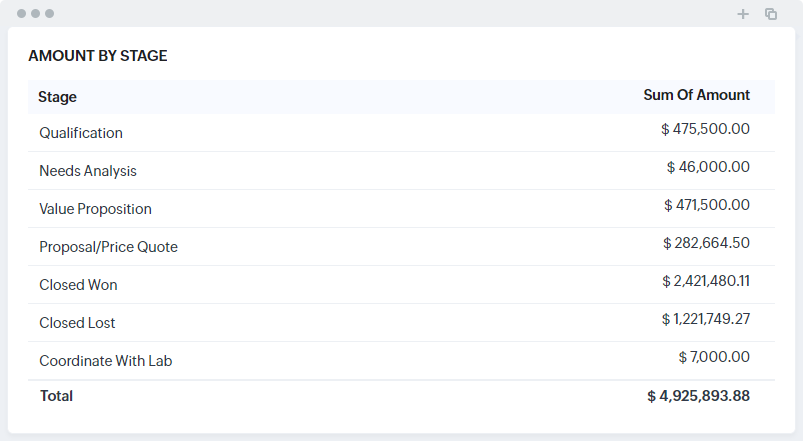
2. Client Satisfaction Analysis: The company can analyze feedback to improve service quality, client satisfaction, and referrals. If clients express a preference for specific landscaping designs or certain planting materials, the company can incorporate these preferences into future projects.
3. Marketing ROI Analysis: By regularly assessing the return on investment (ROI) of marketing efforts, the company can adjust advertising budgets for optimal results. If online advertising consistently generates higher ROI than print media, the company can reallocate its advertising budget toward digital marketing.
In conclusion, deploying a CRM system for your service-based business involves building an effective sales workflow, integrating automation and quarterly data review. Contact CSL today for a free consult; we partner with leading CRM providers like Zoho, Hubspot, Salesforce and many others.
